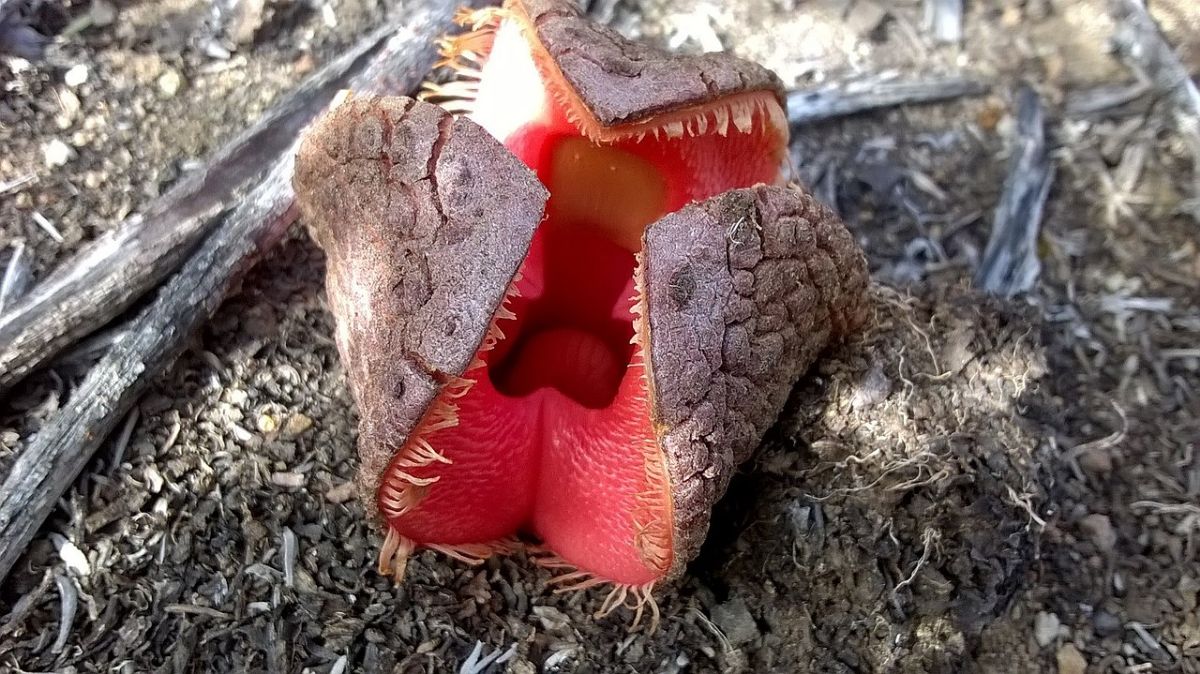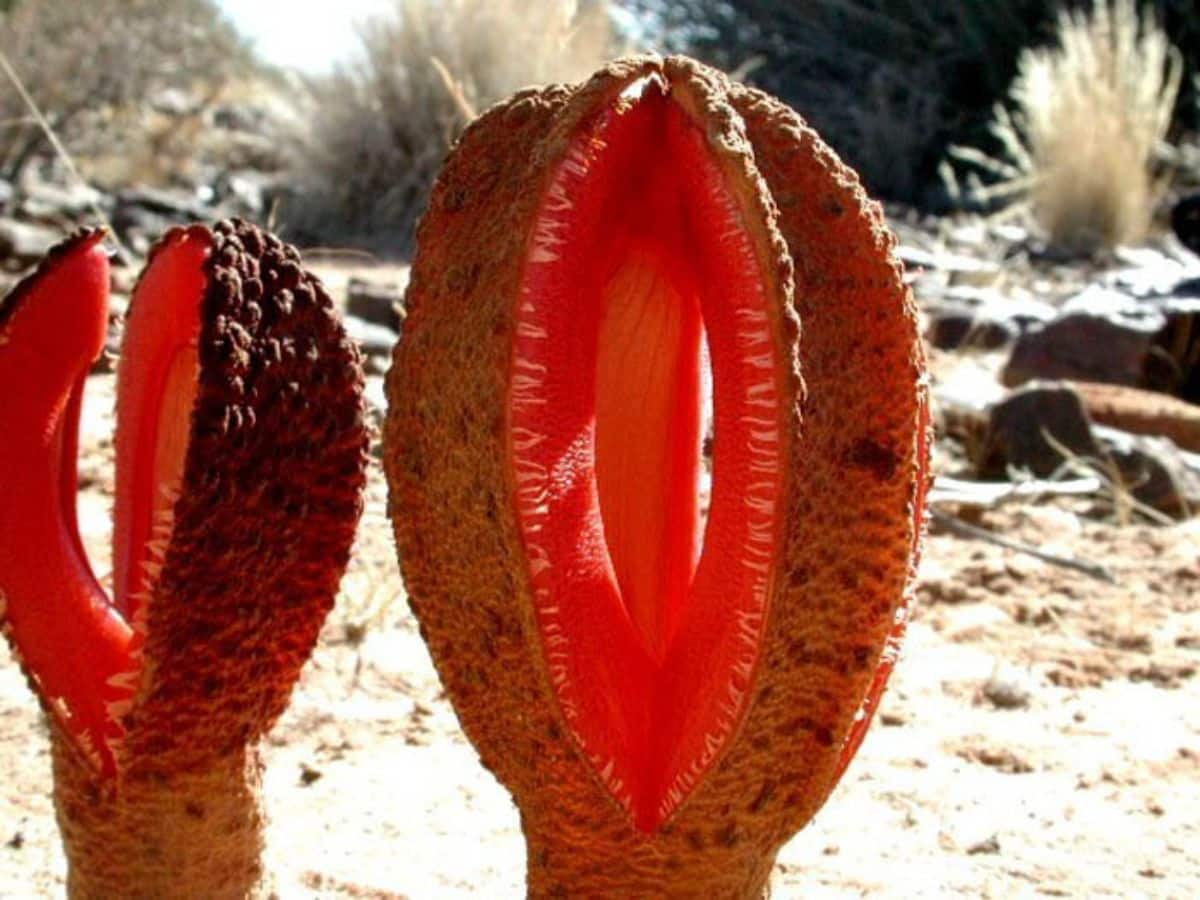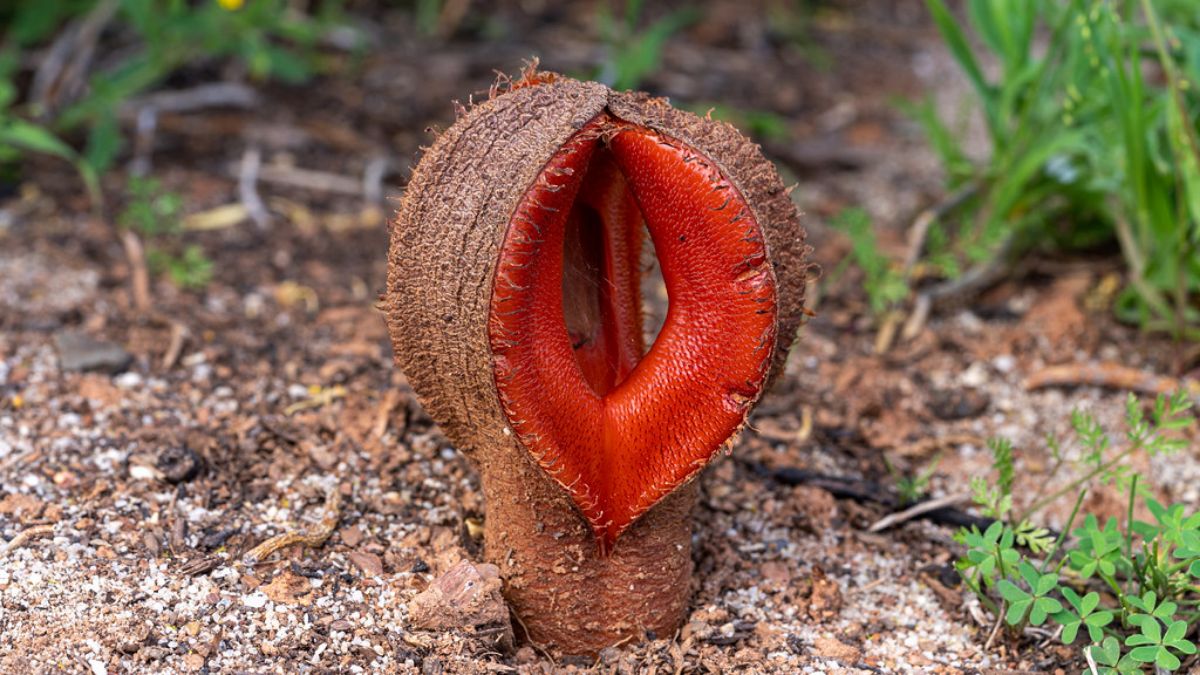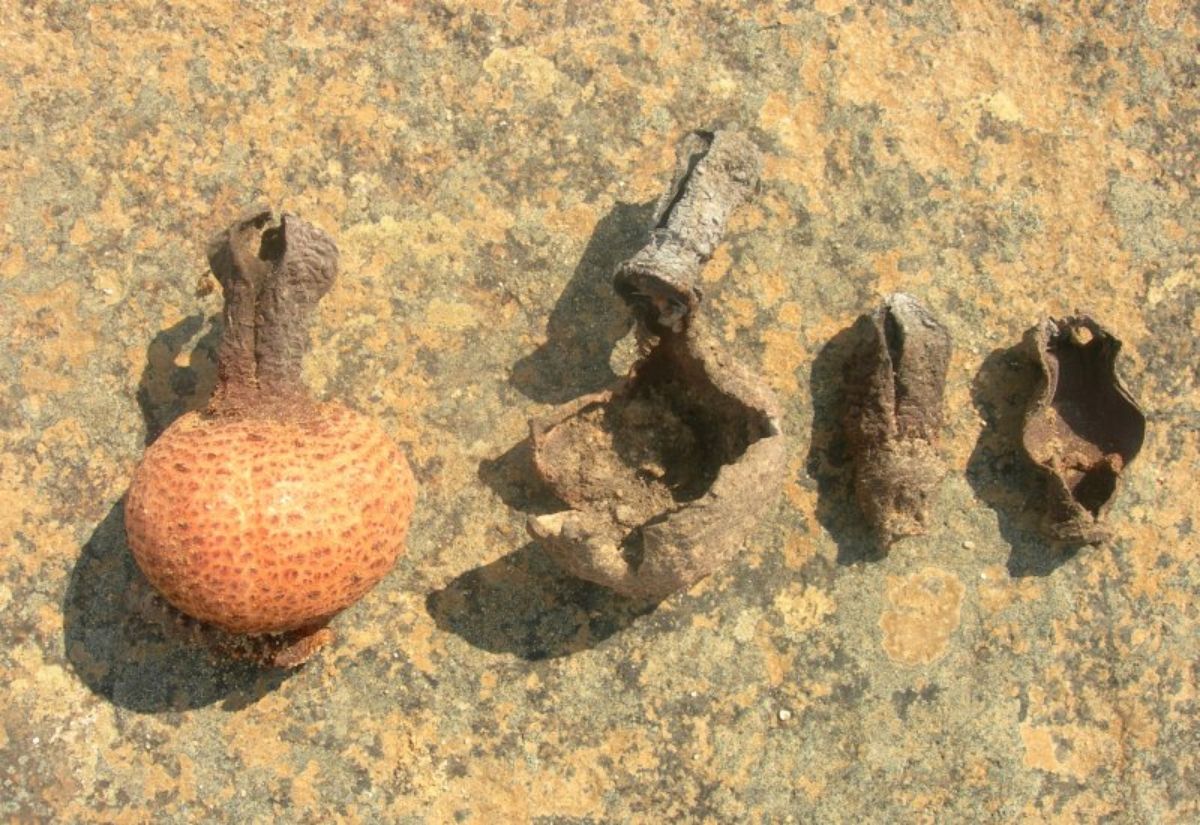
Have you ever heard of the African Hydnora? Also known as “jackal food” or “Jakkalskos”, it is one of the rarest, strangest and most smelly plants that you can find in the world.
Now, We tell you about it, its characteristics and all the curiosities that we have found about this flowering plant that you don't want to have in your garden.
How is the African Hydnora

If you have never met the African Hydnora before, here we present it to you. As you can see, it is quite a rare plant. In fact, what you see is its flower, because the plant grows inside the earth and is parasitic on the roots.
This plant is native to southern Africa and was found by chance by a biologist, Iaguk Vidalsaka. Currently, this plant can also be found in Central and South America.
As for the flower, it comes out of the ground and you should know that it is fleshy and you do not want to be near her since the smell she emits is like that of feces. It is characterized by having three petals that are orange at first.
The reason for the smell is that it seeks to attract natural pollinators. Specifically, look for dung beetles and other beetles that like the spot. What does he do with them? It catches them, but only for a while, because later it releases them.
This is due to it needs those pollinators to get the flower to fully open. If not, I couldn't do it. The flower is entirely red and flesh. There is no doubt that she is very curious, but no one could resist her for long.
Now, as you know, After the flowers, come the fruits. However, these, like almost the entire plant, also they are underground and they are also produced only in the dry season. This can reach 80 millimeters in diameter and inside this there can be up to 20.000 seeds brown in color stored in the gelatinous pulp.
Unlike the flower, the fruit is used as food, not only for animals, but also for humans. It is said that, in addition to being edible, it is quite fragrant and attracts many animals that seek it (monkeys, rhinoceroses, jackals...). If you're wondering, we can tell you that it tastes very, very sweet, mixed with some starch.
How is the plant "inside"
As we have told you before, the African Hydnora is a plant of which you only see the flower, everything else is buried. However, we do know what it looks like (if you see it, you will not really think that it has a flower or that it is a plant, but that it looks more like a fungus).
On one hand, you have the body of the plant. This is grayish brown in color and has no leaves.. It also does not have chlorophyll inside. The youngest specimens are of a brighter brown color and as they become more adult, the tones darken, passing to dark gray and from there to black.
As for the roots, these are known to form around the host plant. So do the stems, which are warty, fleshy, and angular, and connect directly to the roots of the plant. Another point to know is that these can be less than 10 millimeters long, which tells you that they are very close to the plants.
how is the flower
Some more information that you should know about the flower of the African Hydnora is that this, when it emerges to the surface, it will have 3-4 "fleshy petals". At first, these are joined, but as time goes on they break vertically to leave space to expose the bait, which is what will attract the beetles.
The flower can be about 100-150mm tall.
As well It has stamens, only these are in the perianth tube, that is, they are not very visible (especially since this tube is about 10-20 mm wide).
How do beetles pollinate flowers?
Do you wonder how they pollinate it? It's a bit of a "gross" process, but that's what they do. First, they open those petals so that the bait is exposed. This is composed of decomposing white bodies (generated by the same plant). When the insects smell it and approach, the flowers themselves capture them through stiff bristles that prevent them from escaping.
This way, when they finish feeding on the bait, the insects are dragged to the flower tube and along the way, they collect pollen of this until they fall on the stigma and there they pollinate the flower.
That is the moment when it fully opens and, although it does not look like a "normal" flower, we must say that it is.
Uses of Hydnora Africana

Source: curiosities.com
Even if you think not, the truth is that the African Hydnora has multiple uses. Apart from the fact that the fruit can be eaten and is therefore used for food, you should also know that the part of the plant (the vegetable parts) can be used for:
- Tan.
- Coal.
- Drug. Specifically, to treat diarrhea.
Although it is not usual, these uses, especially in Africa, are quite common.
Can you have Hydnora africana as a plant?

Due to the fact that it is rare, you may be wondering if someone could have it in the garden of their house. But we already tell you that it is not usual for this to happen. First, because of the bad smell it would give off; and second because we are talking about a parasitic plant, which means that it needs a host to “feed on it”, which implies sacrificing some plant.
One of the species in which it most often "gets hooked" are the Euphorbias, in such a way that it grows by its side and feeds on it.
Now you know much more about Hydnora africana and, although it is not a plant that is commercialized or easily found, there are seeds. Even so, we do not think you want to have it in your garden since, except for its rarity, everything else will surely put you back. Did you know this plant?